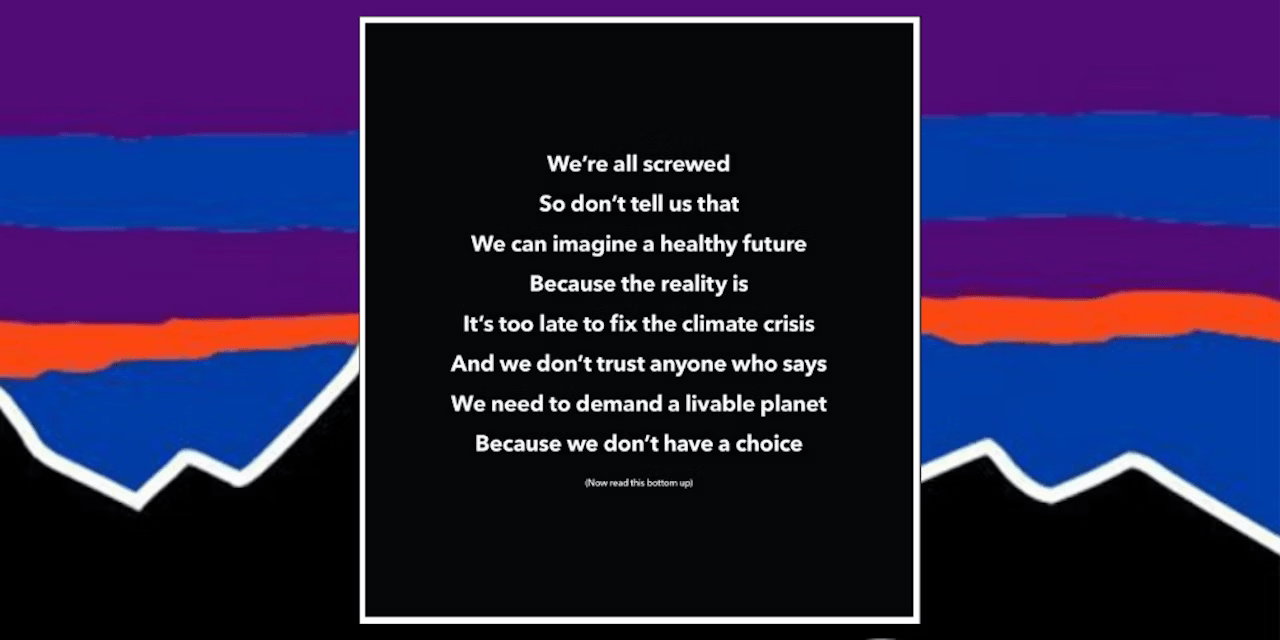
How to design climate-friendly emails
This is a talk I gave at Email Camp 2023.
“What we choose to design and, more importantly, what we choose not to design and, even more importantly, who we exclude from the design process — these are all political acts. Knowing this and ignoring it is also a political act, albeit a cowardly one.” — Mike Monteiro
Nothing is apolitical, so we’re gonna get a little political here. So, I don’t know if you’ve noticed, but…
It’s really f*$%ing hot!
July 3–6, 2023 were the hottest days on record. EVER!!! When I wrote this, the four hottest days on record were all just a few weeks ago. June 2023 was the hottest month on record until July took that title away.

Don’t let the headlines fool you. Despite recent strong growth in wind and solar in the power sector, overall global energy-related greenhouse gas emissions increased this year!
And those of us in tech, we play a part in this mess.

As an industry, communications tech accounts for almost 4% of global carbon emissions. By 2025, if tech were a country, we’ll be the fourth largest polluter behind China, India, and the U.S.
It actually puts us on par with airlines, if you can believe that. We’re as bad as the friggin’ airline industry!

The emails we send and archive, the television and music we stream, and Google Docs we edit — the more devices, servers, and antennas are needed to satisfy our growing and seemingly limitless hunger for data.
The mentality is bad in the global north and especially bad here in the U.S. We’ve done the most damage even though we don’t stand to suffer the worst consequences.
And crypto… don’t even get me started on crypto.
The best explanation for Bitcoin is still "Imagine if keeping your car idling 24/7 produced solved Sudokus you could then trade for heroin". https://t.co/tJxIX522Cm
— 𝙊𝙩𝙩𝙤 𝙅. 𝙈𝙖̈𝙠𝙚𝙡𝙖̈ (@ExTechOp) October 21, 2020
I know there are different ways of doing this stuff, but just… no. None of them are good.
But it’s not just crypto, it’s everywhere. Tech companies can’t keep up. Amazon recently reported that for the first time EVER their emissions didn’t go up. I’m sure they weren’t collecting this data since the beginning, but Amazon was founded 30 years ago. 30 years of damage.

In the AI arms race we’re currently in, no one ever mentions (or maybe even realizes) the environmental impact it’s having.
I guess the press release failed to mention this part.
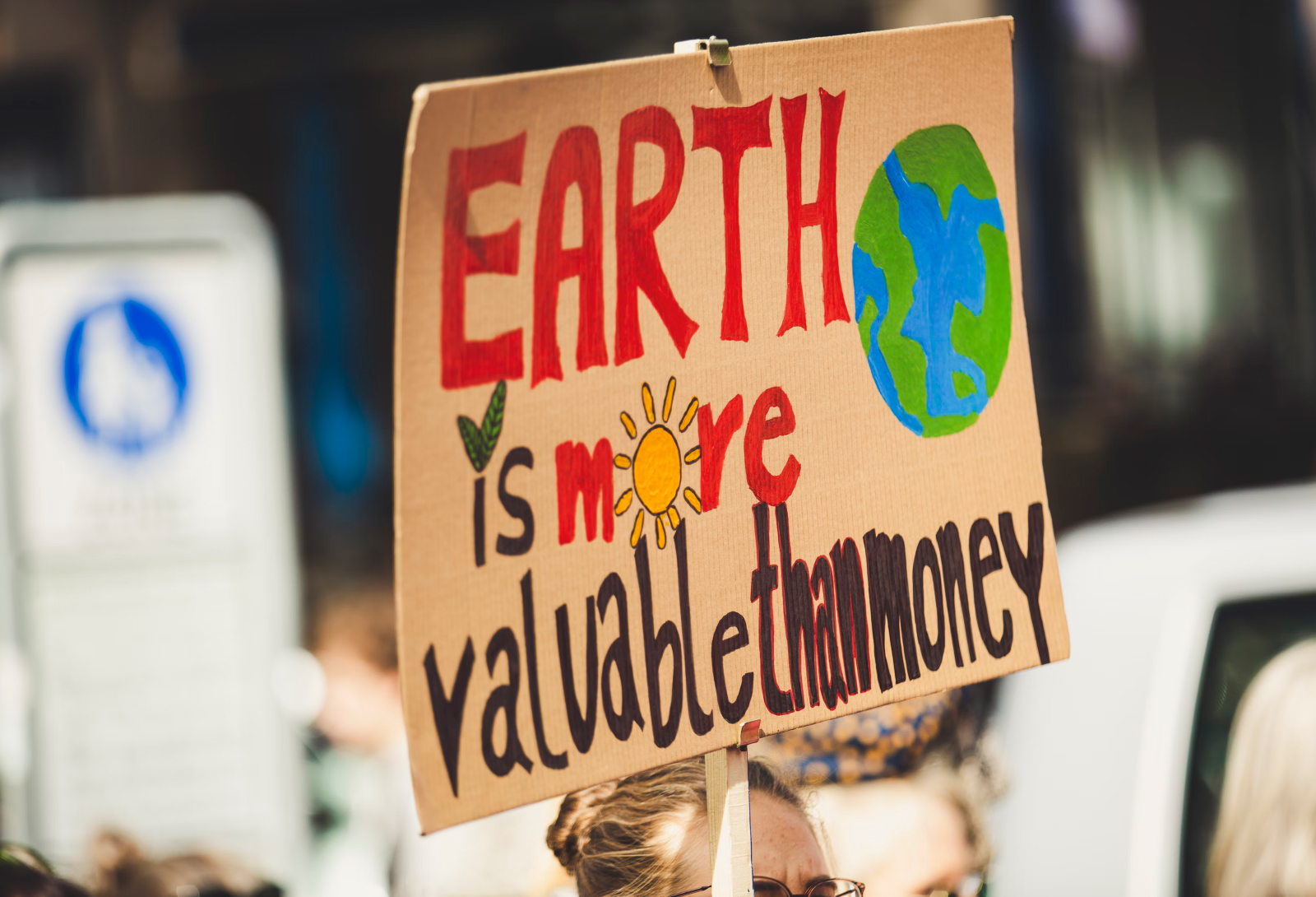
And it’s all for short-term profit. Capitalism. Profits, at any cost. The environment is never on anyone’s mind. The damage we do along the way is often out of sight, out of mind.
Is it cost effective to save the world yet? Not today.
And when companies actually do say they’re gonna do something about the climate problem, too often it comes across like this:
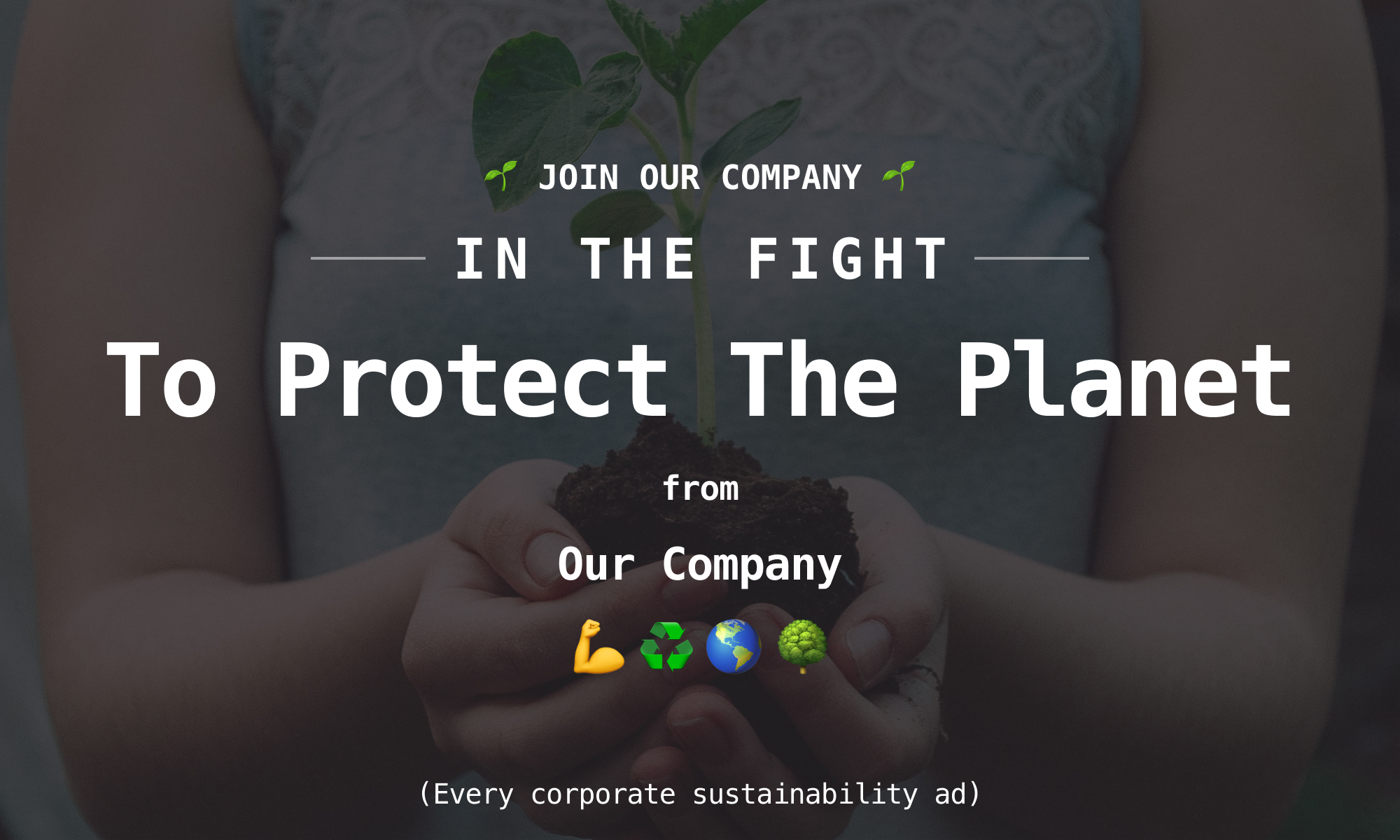
Disingenuous pledges and hollow promises, all too often. If anything, it’s taught me all the clever ways companies find loopholes in climate policies.
What can we do?
So what can we do? We don’t work for an oil company. Or an airline. Or in politics. We’re not in climate tech (at least not yet). What can we do about this?
There is good news! Designers and developers… we’re the ones who decide how things work. That’s our job, and that includes how things interact with the environment.
80% of the ecological impacts of a product are decided at the design phase. Granted this stat includes physical goods that can be reused, repaired, and recycled… but digital folks are still in a good position to have a real impact.
So… what can we do?
4 simple words…
Do less, but better.
So what does that mean in the email world? What are some things we can do today, without changing jobs or careers?
Less emails
Every email we send and every time someone downloads it. Every contact and preference we have to manage. Every data point we have. It all costs energy to capture and store.
- Send less campaigns
- Send less triggered emails
- Periodically and proactively prune subscriber lists.
Send Less Email! (but make the email we do send really good!)
Does anyone know of a good website where I can get a shirt and then also two emails every day for the rest of my life?
— Noah Garfinkel (@NoahGarfinkel) March 24, 2023
Optimize static assets
We should make things load fast! It takes energy every time we have to send data over the wire, so let’s not do any more than we have to.
- Limit images, web fonts, videos, tracking scripts, and animations.
- Reduce HTTP requests (One large image is usually better than two smaller ones.)
- Use a content delivery network (CDN). More on this in a bit.
- Optimize everything! Use variable fonts.
Think not only in file size, but also in HTTP requests. Every trip to the server and back costs time and energy. Many times a single large image costs less energy than two small ones.
Use AI sparingly
A search assisted by GPT-3 has a 5x the carbon footprint than a regular one. Just training Chat-GPT3 used 700,000 liters (185,000 gallons) of water.
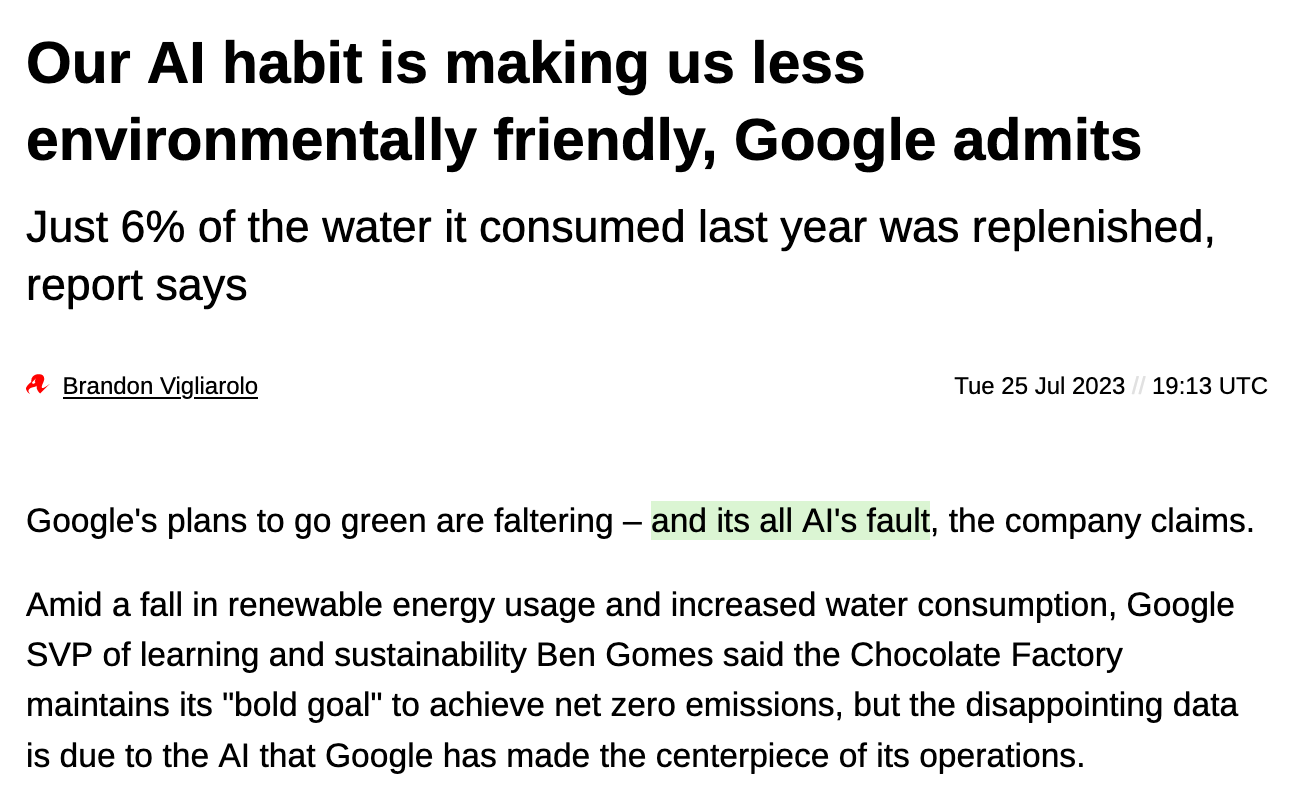
I know it goes against everything that’s going on, but until we can find greener ways to power the AI processes, we should not use it for anything and everything.
Dark mode
It helps exactly how you think it does. Dark designs require less energy to light up most modern screens because less of the screen is illuminated.
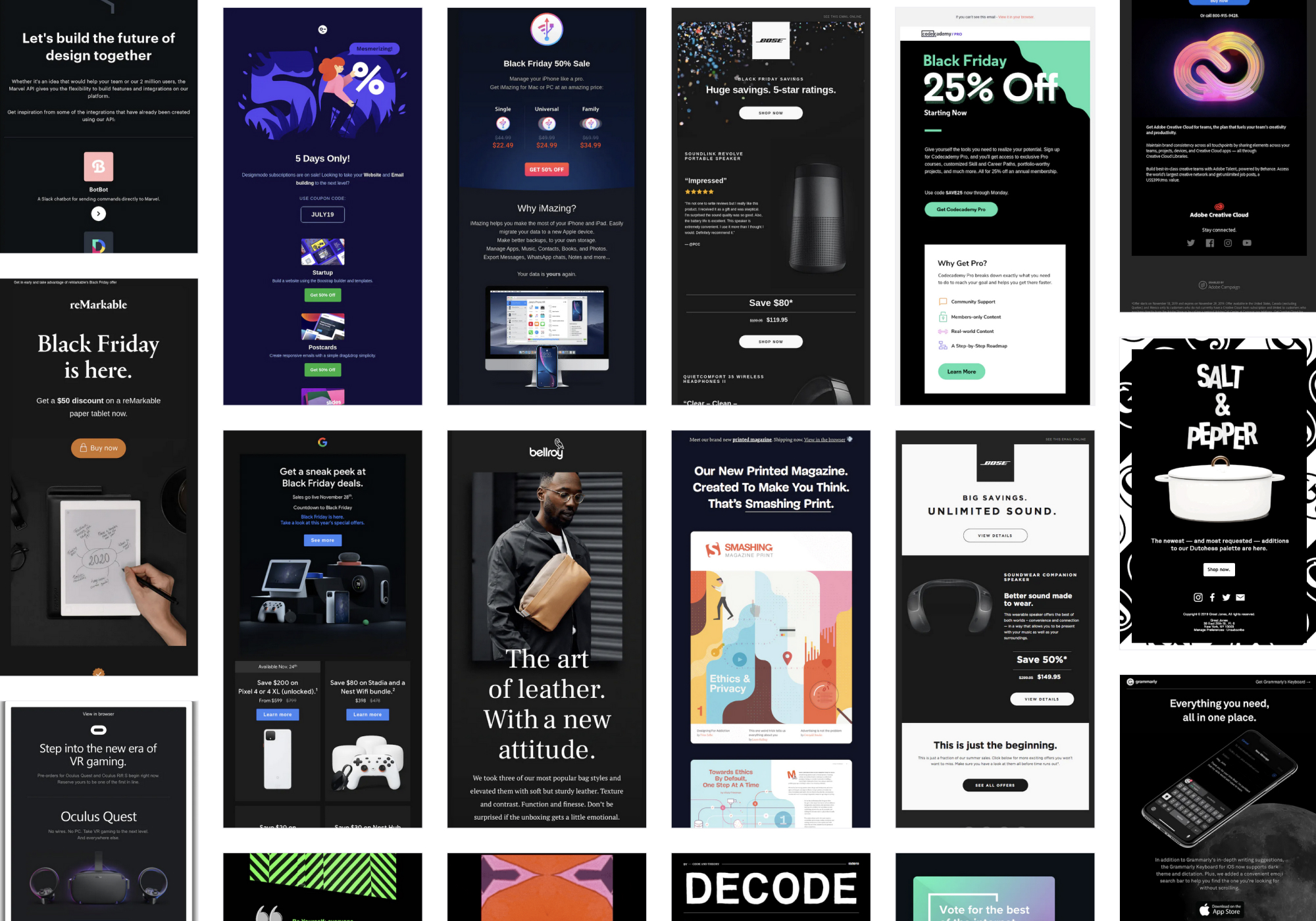
A design in dark mode can save anywhere from 10% — 65% of total energy compared its light counterpart on OLED screens, which means we don’t need to make as many device batteries because they last longer.
You can really go down a rabbit hole with eco-friendly color palettes. Apparently blue uses 25% more power than green or red. We might be splitting hairs, but the point is: all colors are not created equal (as far as energy costs go).
Email Service Providers (ESPs) & Content Delivery Networks (CDNs)
CDNs help with things like caching, performance tooling, and providing servers that are geography close to users. Using a CDN is generally good, but some are better than others.
Data centers use a lot energy to work (d’uh) and, with all those semiconductors whirring around, they use a lot water to keep cool. So it’s important to choose services powered by green energy.
If you’re not able to find out where your tools stand, here’s a trick you can use to get some data: Grab or create an email with a “View as a webpage” link in it, copy the URL, and past it into a tool like Eco Grader or Are my third parties green?. These tools help to measure the CO2 impact of this “web page” and make suggestions for reducing it.
This is especially valuable for organizations dealing in large data sets or large files. Dialpad, my employer, makes voice and video calls over the internet. Audio and video files are big, so I’m thankful we host with Google (who has a good track record with using green energy for its services.
Measure
Measure the carbon footprint of each email. Make it part of the process.
You can might even consider setting a budget for each email, much like some teams have a performance budget for web pages.
There are several tools to help:
Green Nudges
Green nudges are subtle cues that encourage and guide people towards making more environmentally friendly choices.
A few examples include:
- Default settings: Choosing environmentally friendly options by default (because most people never change the default settings).
- Choice architecture: Placing environmentally friendly options at the top of a list of choices.
- Choice feedback: Letting someone know when they’ve chosen a less environmentally friendly option.
- Social norms: Telling someone about the environmentally friendly choices others are making.
Asking people not to print an email, periodically asking folks to review their email preferences and opt out of things they don’t want, setting your ESP to delete static assets after a while so you don’t have to store data no one’s using.
Little nudges like this might be our biggest opportunity because they don’t require changing a lot in our process or organization.
Talk about it!
Start talking about it at work and during projects. Anywhere you can.
In your campaign kickoffs. In your design specs. In your reports. In your retros.
We’re really good at ignoring this stuff. Let’s make it harder to ignore, so it’s no longer “out of sight, out of mind.”

Resources
Here are a few of the resources that helped me.
- Newsletters: Future Crunch, Important Not Important, Climate Draft, Terra.do, Dense Discovery, The Last Few Weeks (Mine!)
- Podcasts: Green the Web, Climate One, Techstars ClimateTech Podcast, Tech 4 Climate, Important Not Important
- Communities: Climate Action Tech, Climate Draft, Terra.do, The Week
- Books: Sustainable Web Design, Designing for Sustainability, World Wide Waste, Sustainable Web Design In 20 Lessons, Design is the Solution, The Ethical Design Handbook
- Courses: Sandy Dähnert’s Green UX/UI Design, Terra.do
- Job boards: Climate Base, Climate Draft
Wrapping up

Consider this: What if design isn’t for humans?
Customers are only transient users of our products. We ultimately design for the environment. Our products and their effects will outlive our users and inhabit the environment for much longer than mankind.
“I wish this email loaded slower.” — Absolutely no one at all ever
A lot of what I talked about focuses on faster loading emails, which is just about the only safe bet we can make in tech. Websites come and go, who knows what gonna happen with things like blockchain or AI. But no one’s gonna wake up in 10 or 20 years and say “Gee, I wish this thing took longer to load.”
Faster loading things usually translate to higher conversions. Turns out sustainable design and capitalism have something in common.
Here’s a long quote from a biased guy. I can sum it up by saying “If we’re not careful, we can screw this up big time.”
“The Internet is the single biggest thing we’re going to build as a species. This is something that if we build it the right way, with the right sources of energy, could really help power our transition to renewables. If we build it the wrong way, it could actually exacerbate the problem.” — Gary Cook, Greenpeace
So I hope this motivates you to think about this stuff more, research it on your own, introduce a new process on your team, make a small change to your own process. I hope it changes the way you see our place in this world as people working on email.
Thank you.
